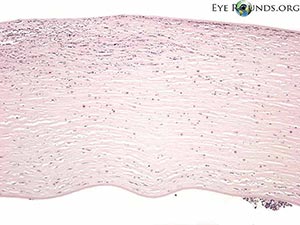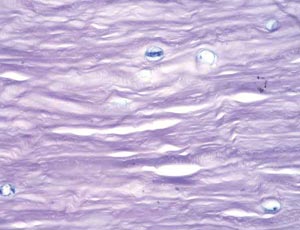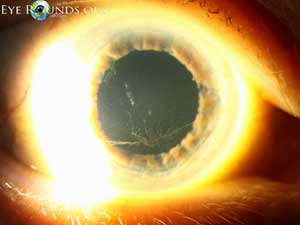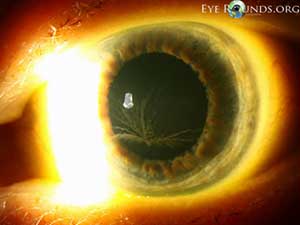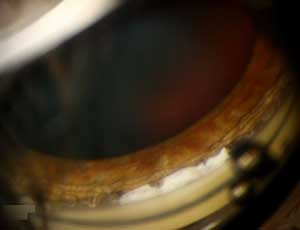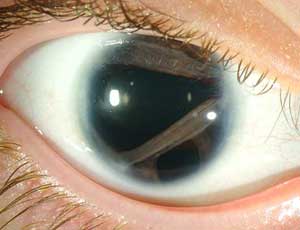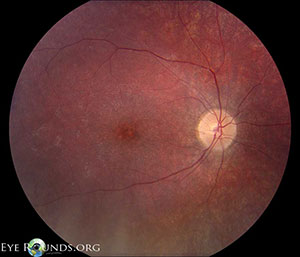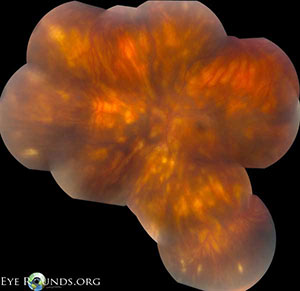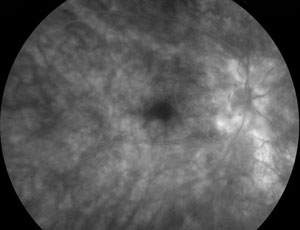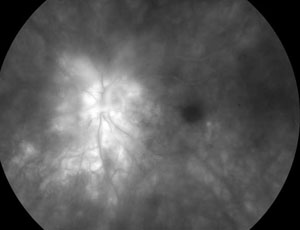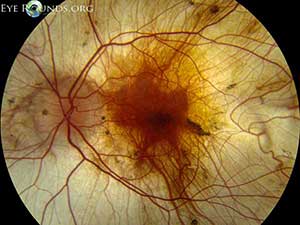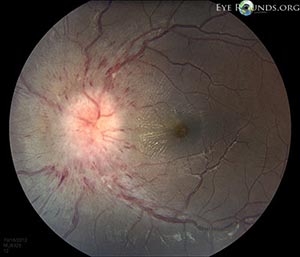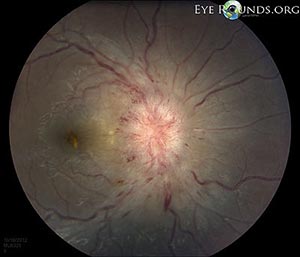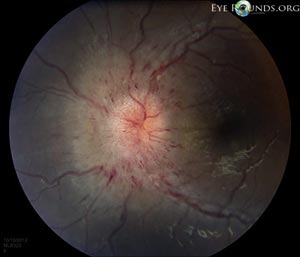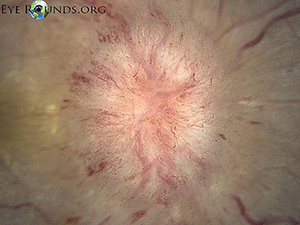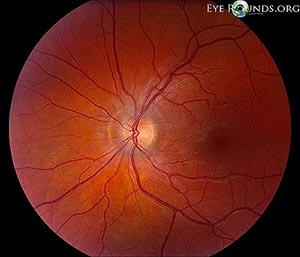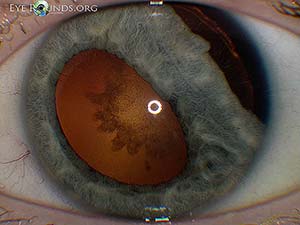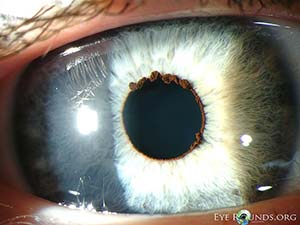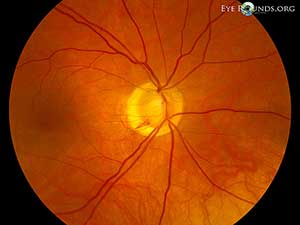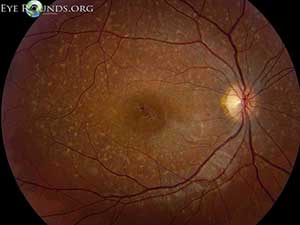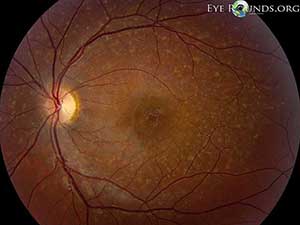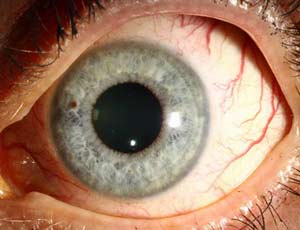EyeRounds Photo Quiz #1
Click "Photo #" to see higher resolution, attempt to answer all questions related to a photo before clicking to see the answer.
Photo 1 see enlarged
Q2: What is the classic clinical appearance of the infiltrate in this condition?
Q3: What imaging modality can help make the diagnosis?
Photo 2 see enlarged
Q1: What is the differential diagnosis for this finding?
Photo 3 see enlarged
Q1: What are the two most important findings on this gonioscopic image?
Q2: What is the likely etiology and pathologic process?
Photo 4 see enlarged
Q1: What are 3 important clinical findings in this photo?
Q2: What is the likely diagnosis?
Q3: What other ocular and systemic findings might be present?
Photo 5 see enlarged
Q1: What is the abnormal finding in this histologic slide?
Photo 6 see enlarged
Q1: What clinical findings are present?
Q3: What would an electroretinogram (ERG) likely show?
Photo 7 see enlarged
Q2: What laboratory test would be most helpful to support the diagnosis?
Photo 8 see enlarged
Photo 9 see enlarged
Q1: What symptoms might support the diagnosis of elevated intracranial pressure in this patient?
Q2: How would you grade the papilledema?
Photo 10 see enlarged
Q2: How is the diagnosis made?
Photo 11 see enlarged
Q1: What is the name of this finding around the disc?
Photo 12 see enlarged
Q1: What are the pertinent findings in this photograph and what is the most likely etiology?
Photo 13 see enlarged
Photo 14 see enlarged
Q1: This finding reportedly occurs more frequently in patients with what type of glaucoma?
Photo 15 see enlarged
Q1: What type of visual field defect might you expect to see in this patient?
Photo 16 see enlarged
Q2: How would you describe these yellow spots?
Photo 17 see enlarged
Q1: What are the pertinent findings in this slit lamp and gonioscopic photograph?
Q2: In a patient with a history of trauma, what is the likely etiology?
Q3: What ocular problem is this patient at risk for?
Photo 18 see enlarged
Q1: What is the name of this finding and where is it located?

